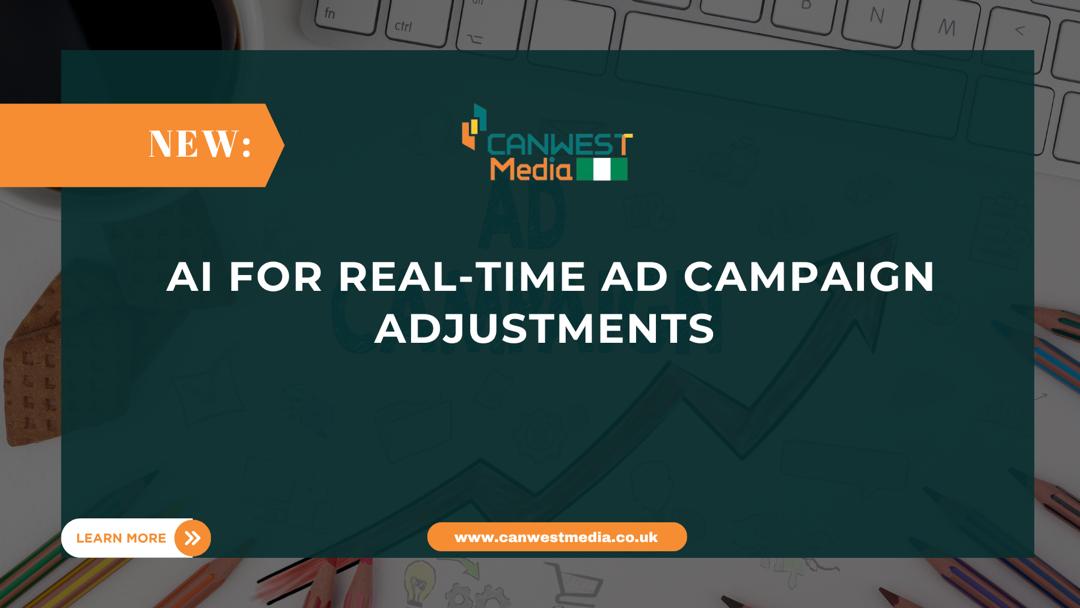
AI FOR REAL-TIME AD CAMPAIGN ADJUSTMENTS
Marketing is no longer a one-size-fits-all endeavor in today’s hyper-connected world. With consumers’ preferences shifting faster than ever and competition intensifying, the need for agility in advertising has never been more critical. Artificial Intelligence (AI), a game-changer that’s revolutionizing how brands manage and optimize their ad campaigns in real-time. To thrive, brands must be able to adjust their strategies in real-time based on shifting market conditions, consumer behaviors, and campaign performance.
Data Analysis and Insights
AI algorithms can process vast amounts of data quickly, extracting actionable insights from various sources such as user interactions, social media trends, and demographic information. By analyzing these data points, AI can identify patterns and trends that humans might miss. For example, if an ad is underperforming in a particular region or demographic, AI can detect this and suggest adjustments in real-time.
Predictive Analytics
Predictive analytics uses historical data and machine learning algorithms to forecast future trends and behaviors. AI can predict how different variables will impact campaign performance, allowing marketers to make informed adjustments before issues arise. For instance, if AI predicts a drop in engagement based on current trends, marketers can adjust their targeting or creative elements to counteract this potential decline.
Dynamic Creative Optimization
AI enables dynamic creative optimization by automatically tailoring ad content to different audience segments. Through machine learning, AI can test various ad variations and identify which creatives perform best with specific audience groups. This real-time optimization ensures that the most effective messages are delivered to the right people, increasing the likelihood of conversions.
Automated Bidding
In digital advertising platforms, AI can manage bidding strategies by adjusting bids in real-time based on performance metrics and budget constraints. Automated bidding ensures that ad spend is allocated efficiently, maximizing the return on investment. For example, if an ad is performing well, AI can increase the bid to capitalize on its success, while reducing bids for underperforming ads.
Audience Segmentation and Targeting
AI enhances audience segmentation by analyzing user data and behavior to create highly specific audience profiles. This granular targeting allows marketers to deliver personalized ads that resonate with individual preferences and interests. AI can dynamically adjust targeting parameters based on real-time data, ensuring that ads reach the most relevant audience segments at the optimal times.
Sentiment Analysis
AI-driven sentiment analysis can gauge public sentiment and emotional responses to ads in real-time. By analyzing social media conversations, reviews, and feedback, AI can provide insights into how ads are perceived by the audience. If sentiment trends negative, marketers can quickly tweak ad content or messaging to address concerns and improve reception.
Moreover, the future of AI in advertising holds even more promise. As AI technology continues to advance, we can expect even greater capabilities in real-time data analysis, creative optimization, and audience targeting. The potential for AI to drive innovation in advertising is vast, offering opportunities for brands to explore new strategies and approaches that were previously unimaginable.
Implementing AI in your ad campaigns may seem daunting, but the benefits are well worth the investment. Start by identifying your campaign goals and choosing the right AI tools that align with your needs. Integrate these tools with your existing systems, and regularly monitor and optimize performance to ensure you’re getting the most out of your AI-powered strategies. Embrace the future of marketing and watch your ad campaigns soar to new heights.
